InTrans / Jan 23, 2015
Build bridges faster—but can you keep them together?
Go! Magazine

posted on January 23, 2015
This article is the third in a series: The ABCs of putting “drivers first” in bridge projects (ABC=accelerated bridge construction)
What does a miniature paper house have in common with accelerated bridge construction (ABC)? The need for sturdy connections.
On YouTube you can find videos with instructions for making small model/doll houses out of cardboard. First, all the pieces are cut out. Then the pieces are assembled and connected with glue or tape to make the house sturdy. Now let’s go to bridges—the ones you drive on. One way to build bridges faster is to make (prefabricate) the bridge pieces (like piers and beams) in advance, usually off site—somewhere away from the actual bridge location. See Figures 1 and 2.
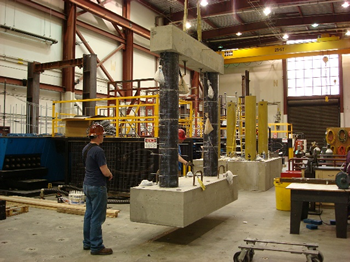
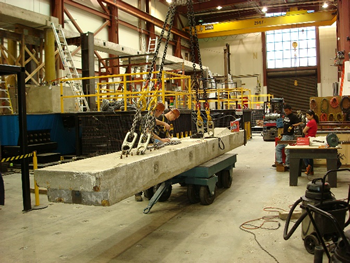
Then, after all the pieces are shipped to the construction site, the bridge is assembled overnight (or a little longer) and—voilà—you have a bridge. Cool, right? But will a prefabricated bridge stay in one piece through an earthquake?
Shaking and rattling a bridge
With a cardboard house, the pieces are connected with tape or glue. To test those connections, you can put the house on a table and start shaking the table. In split seconds, the house will move first one way and then the other, back and forth, putting a lot of stress on those connections. Depending on how hard and long you shake, eventually the pieces will likely break apart or collapse at the connections, and you will end up with a bunch of cards lying flat on the table. This is similar to what can happen to a prefabricated bridge in an earthquake. During an earthquake, the bridge is shaken back and forth, and the connections tend to separate, as shown in Figure 3.

To avoid this kind of separation or breakdown, the connections must be strong as well as energy-absorbent or ductile (bendable). In recent years bridge engineers have been using ABC techniques more often because of their many benefits: fewer and shorter interruptions for travelers, safer construction zones, etc. But ABC using prefabricated bridge parts hasn’t caught on as quickly in states where earthquake-resistant bridge connections are especially critical. It’s great to be able to build bridges faster, but bridge engineers in earthquake-sensitive states don’t want to sacrifice earthquake resistance for construction speed.
Testing bridge connections
So, how can bridge piers and beams be connected so they don’t fall apart like a house of cards under the slightest seismic disturbance? Researchers are scrambling to find good solutions. How? By building large-scale models and testing various bridge connections, such as couplers, on the models. Some models are physically pushed back and forth by hydraulic jacks. Some are mounted on shake tables that simulate real earthquakes right in the labs—sort of like “earthquakes on demand.” As the models are shaken, researchers can conduct tests to find out how well various connections work and how they can be improved. Figures 4 to 8 show an example of how a prefabricated column is connected to a prefabricated footing in preparation for testing.
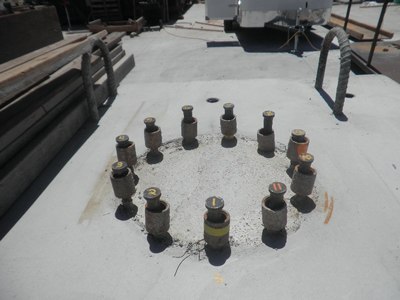
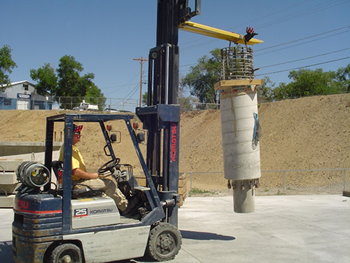
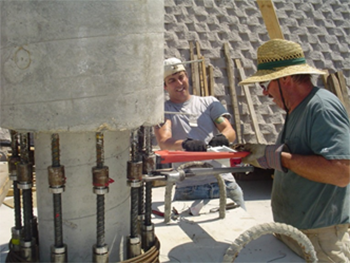
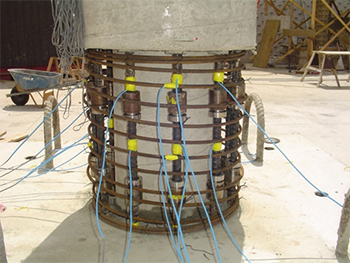
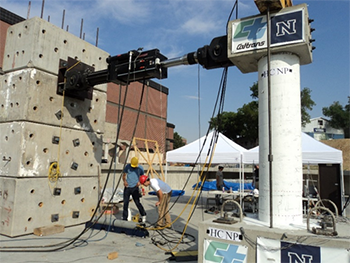
Several other connection types are being investigated. The following is a link to video clips of shake table tests: www.youtube.com/watch?v=vLZ1ZDjfMMo&feature=youtu.be
Related links
This article is the third in a series about a variety of innovative ABC advancements being implemented across the country. See the previous articles:
- “The ABCs of putting drivers first in bridge projects”
- “The many faces of bridge engineering”
- “Accelerated bridge construction—constructability is KEY!”
- Check out the ABC-UTC homepage: http://www.abc-utc.fiu.edu/
- Check out the ABC-UTC-Seismic homepage: https://abc-utc.fiu.edu/education/college-resources/abc-high-seismic-zones-introduction/
- See the Federal Highway Administration initiative to promote ABC (scroll to bottom of page for videos, photos, and more): https://www.fhwa.dot.gov/everydaycounts/edctwo/2012/abc.cfm
By M. Saiid Saiidi, University of Nevada, Reno